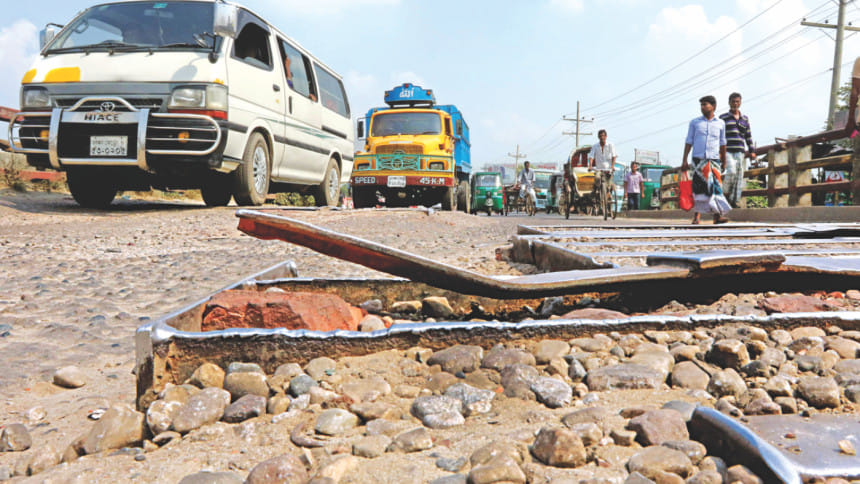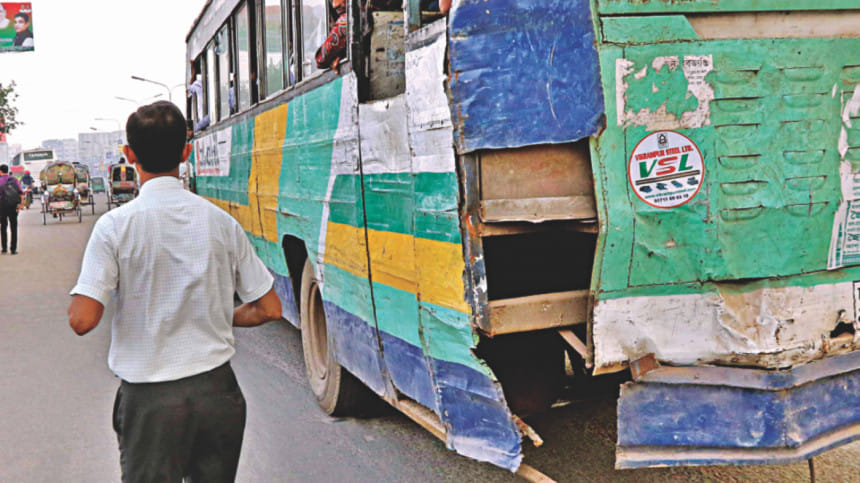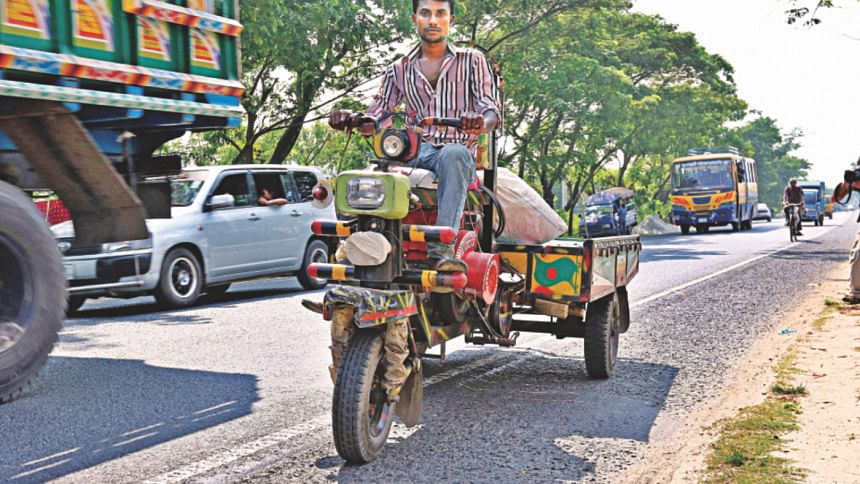'Unfit vehicles are mobile bombs'

Taking unfit vehicles off the roads is crucial to improving road safety as more people get killed in crashes involving such vehicles.
Many of these vehicles have fitness certificates even though they are unfit while some don’t have the document at all or have expired papers or are entirely illegal.
The head-on collision of two buses at Mulibari on the west of Bangabandhu Bridge on July 19 this year is an example of how deadly an unfit bus can be. Eighteen lives were lost and 40 passengers were injured, some of them critically.
The buses were similar in size but only three people died in one bus while the rest of the fatalities were on the other bus, which was unfit.
Like many other buses, the structure of the worse off bus had been modified to increase the number of seats.
All the seats of the bus came off their mountings and were thrown to the front of the bus, proving that the seats were improperly fixed, said Prof Shamsul Hoque, an expert, who inspected the buses at the scene.
|
How to make our roads safer Read what eminent citizens and experts said at The Daily Star roundtable aimed at promoting dialogues on road safety on page 6-7. |
He said the total death could have been much less, may be six to seven, had the bus been fit.
Officer-in-Charge Helal Uddin of Bangabandhu Bridge (West), who was a member of a probe body investigating the crash, yesterday said the bus was carrying a fitness certificate that had expired.
In another crash, 37 people were killed and 40 injured when two buses collided head-on in Boraigram upazila of Natore on October 20 last year.
Both the buses were unfit but were plying the highways without any interference from the law enforcers.

Prof Hoque termed an unfit vehicle a mobile bomb that might explode any time. He said the authorities should monitor when and how vehicles were modified.
The Bangladesh Road Transport Authority issues fitness certificates just by visual inspection of vehicles. Many unfit vehicles slip through and some allegedly pay bribes to get through.
An Automated Vehicles Monitoring system was set up in 2000 to properly test a vehicle for fitness but it is not used.
In Bangladesh many drivers carry fake driving licences and there is practically no limit on how many hours they are allowed to drive at a stretch. Both these contribute to road crashes.

Most drivers are not properly trained and are paid on the basis of trips they make. This encourages them to drive fast and recklessly, which also contributes to road crashes, agree many BRTA officials and owners.
Due to a crisis of drivers, they said a driver usually drives his vehicle for 15 hours or even more when there is a rush of passengers.
According to the Motor Vehicles Ordinance 1983, a driver can drive up to eight hours a day, with a break in the middle.
A transport owner said a driver in Bangladesh usually makes round trips. For example, if he drives a bus to Dinajpur in the morning, the same driver drives back to Dhaka at night, the transport owner told The Daily Star.
Most drivers get tired, sleepy or drive hurriedly to complete their trips, which sometimes cause crashes.
In addition, drivers can drive as fast as they want since speed limits are not enforced, Prof Hoque said.
He said road crashes could be reduced by a big margin just by not allowing unfit vehicles to ply the roads, enforcing the speed limit, fixing driving hours, and resolving road-related problems in a planned way.

Some steps are being taken in an indiscriminate manner, which according to him cannot produce the desired results. “We are still in rudimentary stage in terms of road safety.”
The Road Transport and Bridges Ministry is making efforts but that are not sustainable as most of the steps are reactive rather than proactive.
There is hardly any monitoring of vehicles, drivers, roads, or enforcement of laws and punishment of offenders, experts say.
A Safety Audit Manual has been finalised in 2005 to regularly monitor roads and solve their problems before crashes happen. The Roads and Highways Department is still sitting on it, sources claimed.
Today is National Road Safety Day.

 For all latest news, follow The Daily Star's Google News channel.
For all latest news, follow The Daily Star's Google News channel. 



Comments